-
 Bitcoin
Bitcoin $83,891.7312
-1.88% -
 Ethereum
Ethereum $1,578.4275
-3.33% -
 Tether USDt
Tether USDt $1.0000
0.00% -
 XRP
XRP $2.0794
-3.57% -
 BNB
BNB $581.8908
-0.92% -
 Solana
Solana $125.6113
-4.72% -
 USDC
USDC $1.0000
0.01% -
 TRON
TRON $0.2542
2.44% -
 Dogecoin
Dogecoin $0.1532
-3.25% -
 Cardano
Cardano $0.6060
-4.54% -
 UNUS SED LEO
UNUS SED LEO $9.3729
-0.62% -
 Chainlink
Chainlink $12.1807
-2.99% -
 Avalanche
Avalanche $18.8840
-5.20% -
 Stellar
Stellar $0.2359
-2.26% -
 Toncoin
Toncoin $2.8640
-4.28% -
 Shiba Inu
Shiba Inu $0.0...01167
-1.98% -
 Sui
Sui $2.0804
-4.68% -
 Hedera
Hedera $0.1572
-4.15% -
 Bitcoin Cash
Bitcoin Cash $318.3980
-3.27% -
 Litecoin
Litecoin $74.6060
-3.46% -
 Polkadot
Polkadot $3.5135
-3.83% -
 Dai
Dai $1.0001
0.01% -
 Bitget Token
Bitget Token $4.3450
0.02% -
 Hyperliquid
Hyperliquid $15.2439
-4.40% -
 Ethena USDe
Ethena USDe $0.9993
0.01% -
 Pi
Pi $0.6134
-9.10% -
 Monero
Monero $217.7508
1.15% -
 Uniswap
Uniswap $5.1593
-3.72% -
 OKB
OKB $52.0646
-0.19% -
 Pepe
Pepe $0.0...07144
-1.75%
What is a smart contract vulnerability in a blockchain?
Smart contract vulnerabilities, like reentrancy attacks and integer overflows, can lead to financial losses and loss of trust in blockchain platforms.
Apr 14, 2025 at 10:01 pm

A smart contract vulnerability in a blockchain refers to weaknesses or flaws within the code of a smart contract that can be exploited by attackers to manipulate the contract's behavior, steal funds, or disrupt the operations of the blockchain network. Smart contracts are self-executing contracts with the terms of the agreement directly written into code, running on blockchain platforms like Ethereum. While they offer numerous benefits such as automation and transparency, vulnerabilities in their code can lead to significant security risks. Understanding these vulnerabilities is crucial for developers, users, and investors to ensure the integrity and safety of their transactions and investments.
Common Types of Smart Contract Vulnerabilities
Smart contract vulnerabilities can take various forms, each presenting different risks and challenges. Some of the most common types include:
- Reentrancy Attacks: This occurs when a contract calls an external contract before resolving its own state changes, allowing the external contract to repeatedly call back into the original contract before it finishes executing. The infamous DAO hack on Ethereum in 2016 was a result of a reentrancy attack.
- Integer Overflow and Underflow: These vulnerabilities arise when the arithmetic operations in a smart contract exceed the maximum or minimum values that can be represented by the data type. This can lead to unexpected behavior and potential exploits.
- Access Control Issues: Improper management of who can call certain functions within a smart contract can lead to unauthorized access and manipulation. For example, if anyone can call a function that transfers funds, it can be exploited.
- Unchecked External Calls: When a smart contract makes calls to external contracts without proper checks, it can lead to vulnerabilities if the external contract behaves unexpectedly.
- Front-Running Attacks: These occur when an attacker sees a transaction in the mempool and submits a similar transaction with a higher gas price to be mined first, thereby manipulating the outcome of the original transaction.
Impact of Smart Contract Vulnerabilities
The impact of smart contract vulnerabilities can be severe and multifaceted. Financial losses are one of the most immediate and visible consequences, as seen in numerous high-profile hacks where millions of dollars worth of cryptocurrencies were stolen. For instance, the Parity Wallet hack in 2017 resulted in the freezing of over $150 million in Ether due to a vulnerability in the smart contract managing the wallet.
Beyond financial losses, smart contract vulnerabilities can also lead to loss of trust in the blockchain platform. When users and investors lose confidence in the security of a blockchain, it can lead to decreased adoption and usage, ultimately affecting the platform's value and viability. Additionally, vulnerabilities can lead to disruption of services, where the normal functioning of decentralized applications (dApps) built on top of the blockchain is compromised, affecting users and businesses that rely on these services.
Examples of Notable Smart Contract Vulnerabilities
Several high-profile incidents have highlighted the real-world impact of smart contract vulnerabilities. The DAO Hack in 2016 is one of the most well-known examples. An attacker exploited a reentrancy vulnerability in The DAO, a decentralized autonomous organization built on Ethereum, to drain approximately 3.6 million Ether, worth around $50 million at the time. This led to a hard fork of the Ethereum blockchain, resulting in Ethereum and Ethereum Classic.
Another notable example is the Parity Wallet Hack in 2017. A vulnerability in the smart contract managing the Parity multi-signature wallet allowed an attacker to take control of the wallet and freeze over $150 million in Ether. This incident underscored the importance of thorough code audits and secure smart contract design.
Preventing Smart Contract Vulnerabilities
Preventing smart contract vulnerabilities requires a multi-faceted approach that includes both technical and procedural measures. Code Audits are essential, where experienced auditors review the smart contract code to identify potential vulnerabilities before deployment. Many blockchain platforms and development teams now offer professional auditing services to ensure the security of smart contracts.
- Use of Formal Verification: This involves using mathematical proofs to verify the correctness of smart contract code. Tools like the Ethereum Formal Verification project can help developers ensure that their contracts behave as intended under all possible conditions.
- Secure Coding Practices: Developers should follow established best practices for writing secure smart contracts, such as using safe math libraries to prevent integer overflows and underflows, and implementing proper access control mechanisms.
- Testing and Simulation: Before deploying a smart contract to the mainnet, it should be thoroughly tested on testnets and simulated environments to identify and fix any potential issues.
- Continuous Monitoring: Even after deployment, smart contracts should be continuously monitored for any unusual activity that could indicate a vulnerability being exploited. This can be done through automated monitoring tools and manual reviews.
Tools and Resources for Identifying Smart Contract Vulnerabilities
Several tools and resources are available to help developers and users identify and mitigate smart contract vulnerabilities. Mythril is an open-source security analysis tool for Ethereum smart contracts that uses symbolic execution, SMT solving, and taint analysis to detect vulnerabilities. It can be used to analyze smart contract bytecode and identify potential issues.
- Slither: Another popular tool, Slither is a static analysis framework that can detect vulnerabilities in Solidity smart contracts. It provides detailed reports on potential issues and can be integrated into the development workflow.
- Remix: An online IDE for Solidity, Remix includes built-in static analysis tools that can help developers identify common vulnerabilities as they write their code.
- Smart Contract Best Practices: The Ethereum community has developed a set of best practices for writing secure smart contracts, which can be found on the Ethereum GitHub repository. These guidelines cover various aspects of smart contract security, from coding practices to deployment and maintenance.
Case Studies of Smart Contract Vulnerability Mitigation
Several blockchain projects have successfully mitigated smart contract vulnerabilities through proactive measures. Compound Finance, a decentralized lending protocol, discovered a vulnerability in its smart contract that could have allowed an attacker to drain funds from the platform. The team quickly paused the protocol, fixed the vulnerability, and resumed operations without any losses.
In another case, MakerDAO identified a potential vulnerability in its smart contract that could have led to the manipulation of the DAI stablecoin's price. The team implemented a fix through a governance vote, demonstrating the power of decentralized governance in addressing smart contract vulnerabilities.
Frequently Asked Questions
Q: How can I check if a smart contract I am interacting with is vulnerable?
A: You can use tools like Mythril or Slither to analyze the smart contract's bytecode for potential vulnerabilities. Additionally, checking if the smart contract has been audited by a reputable firm can provide assurance of its security.
Q: Are all smart contract vulnerabilities preventable?
A: While many vulnerabilities can be prevented through secure coding practices and thorough audits, some vulnerabilities may only be discovered after deployment. Continuous monitoring and updates are essential to mitigate these risks.
Q: Can smart contract vulnerabilities be fixed after deployment?
A: Yes, smart contract vulnerabilities can often be fixed through updates or patches. However, this may require a governance process in decentralized systems, and in some cases, it may not be possible to fix the vulnerability without redeploying the contract.
Q: How do smart contract vulnerabilities affect the overall security of a blockchain?
A: Smart contract vulnerabilities can compromise the security of a blockchain by enabling attacks that lead to financial losses, loss of trust, and disruption of services. However, the impact can be mitigated through robust security measures and proactive vulnerability management.
Disclaimer:info@kdj.com
The information provided is not trading advice. kdj.com does not assume any responsibility for any investments made based on the information provided in this article. Cryptocurrencies are highly volatile and it is highly recommended that you invest with caution after thorough research!
If you believe that the content used on this website infringes your copyright, please contact us immediately (info@kdj.com) and we will delete it promptly.
- Gold prices have surpassed $3,300 per ounce, setting a historic high as global markets face heightened volatility.
- 2025-04-16 20:35:12
- Mantra Labs CEO John Mullin Aims to Earn Community Confidence by Permanently Removing the Team's Tokens from Circulation
- 2025-04-16 20:35:12
- Mantra CEO John Mullin Plans to Burn All Team-Held OM Tokens to Rebuild Trust
- 2025-04-16 20:30:13
- BNB Chain Burns $916 Million Worth of Tokens in Latest Incineration Event
- 2025-04-16 20:30:13
- Bitcoin (BTC) Dips to $83k Today as Market Uncertainty Grips the Crypto Space
- 2025-04-16 20:25:13
- Pi Coin Price Has Slipped Nearly 15% Today to $0.6
- 2025-04-16 20:25:13
Related knowledge

Can the application of blockchain in supply chain finance bring benefits?
Apr 15,2025 at 04:00pm
Can the application of blockchain in supply chain finance bring benefits? The integration of blockchain technology into supply chain finance has garnered significant attention in the cryptocurrency and financial sectors. This article explores how blockchain can potentially revolutionize supply chain finance, detailing its benefits and providing a compre...
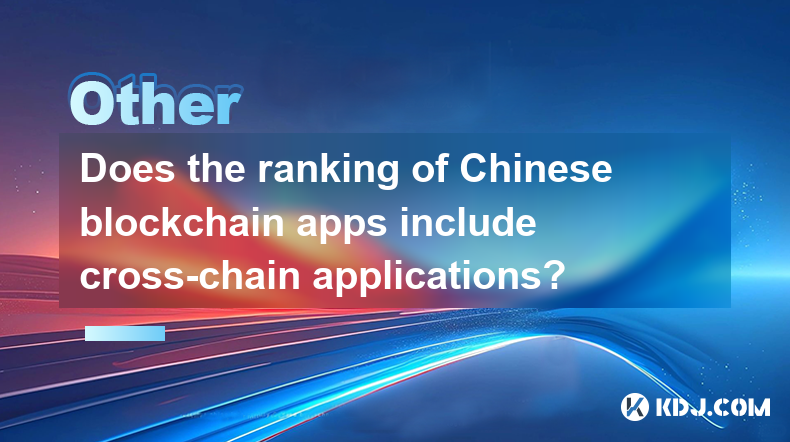
Does the ranking of Chinese blockchain apps include cross-chain applications?
Apr 14,2025 at 04:00pm
The ranking of Chinese blockchain apps is a comprehensive evaluation that takes into account various aspects such as user base, transaction volume, and technological innovation. A pertinent question arises regarding whether these rankings include cross-chain applications. Cross-chain applications, which allow different blockchain networks to interact an...
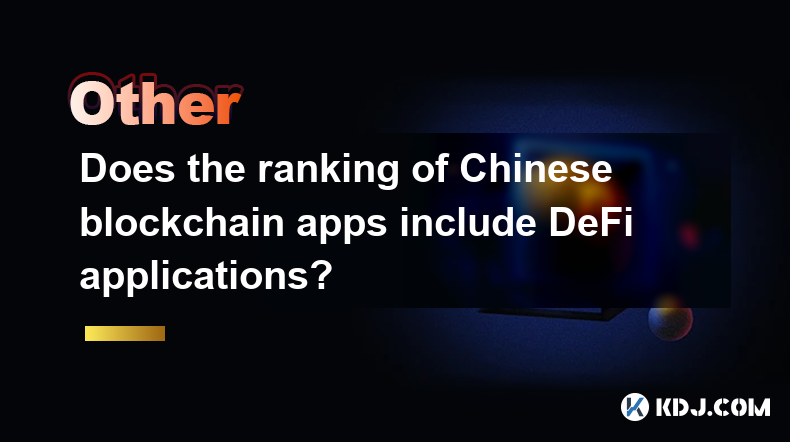
Does the ranking of Chinese blockchain apps include DeFi applications?
Apr 15,2025 at 06:57am
The ranking of Chinese blockchain apps is a comprehensive list that showcases the most popular and influential applications within the cryptocurrency ecosystem. One question that often arises is whether these rankings include DeFi applications. To answer this, we need to delve into the specifics of how these rankings are compiled and what types of appli...
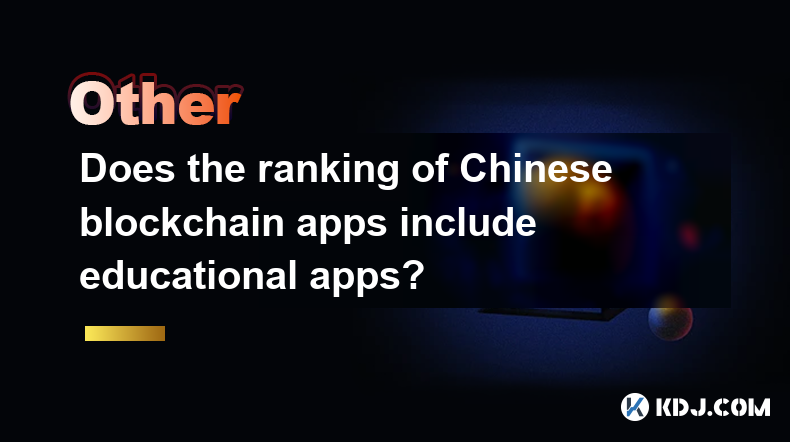
Does the ranking of Chinese blockchain apps include educational apps?
Apr 16,2025 at 03:35am
The ranking of Chinese blockchain apps often includes a variety of categories, from finance and gaming to social networking and beyond. One question that frequently arises is whether these rankings include educational apps. To address this, we need to delve into the specifics of how blockchain apps are categorized and ranked in China, and whether educat...
Does the ranking of Chinese blockchain apps include enterprise-level applications?
Apr 15,2025 at 06:42am
The ranking of Chinese blockchain apps often includes a variety of applications, ranging from consumer-focused to enterprise-level solutions. Understanding the scope and criteria for these rankings is essential to determine if enterprise-level applications are included. This article delves into the specifics of how Chinese blockchain app rankings are co...
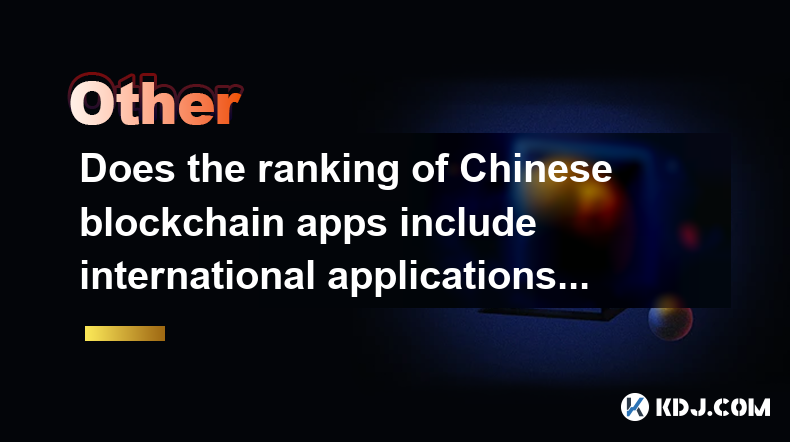
Does the ranking of Chinese blockchain apps include international applications?
Apr 16,2025 at 04:07am
The ranking of Chinese blockchain apps primarily focuses on applications developed and predominantly used within China. However, the question of whether these rankings include international applications is an intriguing one that warrants a detailed exploration. In this article, we will delve into the criteria used for ranking Chinese blockchain apps, th...

Can the application of blockchain in supply chain finance bring benefits?
Apr 15,2025 at 04:00pm
Can the application of blockchain in supply chain finance bring benefits? The integration of blockchain technology into supply chain finance has garnered significant attention in the cryptocurrency and financial sectors. This article explores how blockchain can potentially revolutionize supply chain finance, detailing its benefits and providing a compre...

Does the ranking of Chinese blockchain apps include cross-chain applications?
Apr 14,2025 at 04:00pm
The ranking of Chinese blockchain apps is a comprehensive evaluation that takes into account various aspects such as user base, transaction volume, and technological innovation. A pertinent question arises regarding whether these rankings include cross-chain applications. Cross-chain applications, which allow different blockchain networks to interact an...

Does the ranking of Chinese blockchain apps include DeFi applications?
Apr 15,2025 at 06:57am
The ranking of Chinese blockchain apps is a comprehensive list that showcases the most popular and influential applications within the cryptocurrency ecosystem. One question that often arises is whether these rankings include DeFi applications. To answer this, we need to delve into the specifics of how these rankings are compiled and what types of appli...

Does the ranking of Chinese blockchain apps include educational apps?
Apr 16,2025 at 03:35am
The ranking of Chinese blockchain apps often includes a variety of categories, from finance and gaming to social networking and beyond. One question that frequently arises is whether these rankings include educational apps. To address this, we need to delve into the specifics of how blockchain apps are categorized and ranked in China, and whether educat...

Does the ranking of Chinese blockchain apps include enterprise-level applications?
Apr 15,2025 at 06:42am
The ranking of Chinese blockchain apps often includes a variety of applications, ranging from consumer-focused to enterprise-level solutions. Understanding the scope and criteria for these rankings is essential to determine if enterprise-level applications are included. This article delves into the specifics of how Chinese blockchain app rankings are co...

Does the ranking of Chinese blockchain apps include international applications?
Apr 16,2025 at 04:07am
The ranking of Chinese blockchain apps primarily focuses on applications developed and predominantly used within China. However, the question of whether these rankings include international applications is an intriguing one that warrants a detailed exploration. In this article, we will delve into the criteria used for ranking Chinese blockchain apps, th...
See all articles























































































